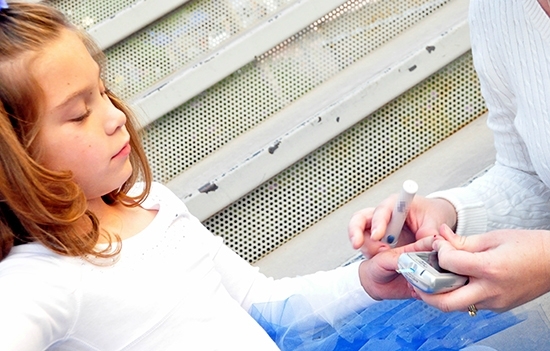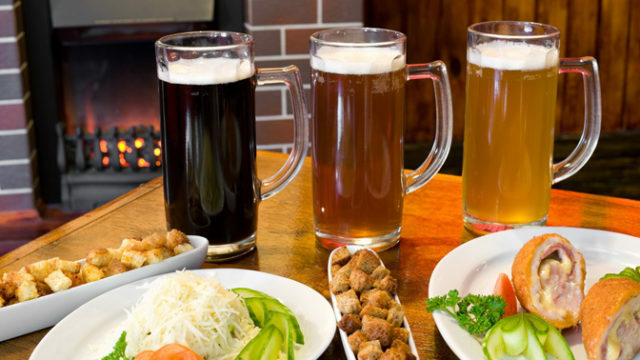Unfortunately, against the backdrop of an increasing number of patients with diabetes mellitus, hypoglycemia has ceased to be a rare phenomenon, significantly younger, but has remained extremely dangerous for its rapidity. Often, first aid for hypoglycemia can save a person from disability, and even death.
What is hypoglycemia
If, regardless of the cause, the blood glucose level drops sharply, neurons in the brain begin to lack a carbohydrate and oxygen, resulting in a rapidly developing mental disorder, down to a deep coma.
Usually, the symptoms of hypoglycemia begin when reaching a mark of 3 mmol / l, at 1-2 mmol / l comatose state begins. However, when insulin therapy is received, the condition can begin before these markers are reached, if the sugar level began to decline too sharply. The biggest danger is that from the initial stage to a deep coma it can take 15-30 minutes, after which the person loses consciousness.
The only way to avoid deep coma is to timely replenish the body with glucose, which, in fact, is the first aid. It's just not always possible to diagnose hypoglycemia correctly, which takes precious minutes.
Reasons for the state of
A total of 3 causes most often pose a danger to the life of the patient, but unfortunately they continue to often occur:
- The patient has recently been sick and has not learned to feel the imminent threat or to stop it on time.
- When consuming alcoholic beverages. The difficult condition is that the body reacts differently to the drinks taken, they also affect the effect of the medications administered. In addition, the state of intoxication is too similar to hypoglycemic, which makes it difficult to diagnose.
- When you enter insulin it is sometimes difficult to accurately take into account the amount of carbohydrates( an unfamiliar dish, the place of preparation), or you need high physical activity that "ate" glucose. Sometimes there is the input of a more concentrated dose by mistake. In other cases, fast-acting insulin was made by intramuscular injection instead of subcutaneous injection. This accelerates the body's response to insulin.

As soon as a person becomes aware of his illness, he should immediately and very carefully discuss with his attending physician the features of the diet, the amount of exercise. In addition, at least for the first time it is necessary to observe the amount of glucose in the blood throughout your day to accurately determine the characteristics of the body, its insulin requirements, and the response to injections. This will reduce the risk of a sharp drop in sugar. It is especially important to prepare for night time, so that the glycemia does not come in a dream.
Diagnosis of
The best way to diagnose hypoglycemia is to do tests for the amount of sugar in your blood. However, not always it is a question of specialized medical institutions. Bad can become outdoors, in the park for a walk, in the office, and it is important to recognize a person's condition in order to take the right measures. At the initial stage the patient can:
- Feel general weakness;
- To starve;
- Shake all over;
- Feel a headache, heart palpitations;
- There is numbness in the lips and tongue.
If the patient does not receive assistance in the first stage, then his condition becomes worse, becomes close to the insane:
- Reminiscent of intoxication, which often does not help on time.
- Aggressiveness, negativism.
- Strange, inexplicable actions.
- In the presence of hallucinations, both auditory and visual.
In the absence of care, clinical-tonic convulsions, co-morbidity and loss of consciousness are coma. When comatose, the following is observed:
- Tachycardia( rarely bradycardia);
- Wet skin;
- Pressure close to normal;
- Muscles in hypertension;
- Breathing is even;
- Possible development of cerebral edema.
First Aid Measures
Because medical help is not always available, and there are no measuring devices or special medicines, in a situation where there was a suspicion of a hypoglycemic condition in the patient, it is enough to give them candy, sweet tea, jam, in order to replenish the body with glucose. It is important that the candy is not a bar or chocolate, because there are many substances that are currently unnecessary for the body. Only an ordinary caramel.

It is much more difficult to act if a person's condition has reached a loss of consciousness. Then the following algorithm works:
- The patient is laid on his side.
- Mouth is free of food debris.
- With the preservation of the swallowing reflex, sweet tea is sipped. In no case can it be watered by a person who can no longer swallow, since there is a high probability that it will choke.
- Many diabetics carry a syringe with a tube-shaped glucagon. Introduced 1 ml, it can be subcutaneous and intramuscular.
- Strongly pinch and hit the area in which most of the muscle mass is located. This stimulates the production of an additional amount of catecholamines, which will help synthesize the liver glucose. Helps in case there is a supply of glycogen in the body.
- Be sure to call an ambulance.
Having arrived, the doctor renders first aid by injecting 60 ml of 40% glucose intravenously. If the diagnosis is correct and has not been more than an hour after the onset of hypoglycemia, this should be enough for the patient to recover. If consciousness does not return, glucose begins to drip intravenously and at the same time is transported to a hospital.
There is an important nuance: if no one has seen the state of the patient before a coma, first aid consists only in the hospitalization of a person. The reason is a high probability of a lack of sugar in the blood, but, on the contrary, an excessive amount of it. In this case, the introduction of additional glucose can cost the patient a life, and without laboratory research all procedures and manipulations will have to be postponed.
Features of child-bearing
The causes and symptoms of hypoglycemia in children are almost the same as in adults. However, there are significant nuances:
- A child, especially a small one, is not in a position to not only describe its deteriorating state, but even realize the emerging symptoms, so that it can be addressed to adults, so diagnosing the problem is much more difficult.
- In children, the period before the coma is shortened, all processes occur faster, including irreparable disruption of the brain and withdrawal from life. An urgent intervention is needed, a rapid response from both the adults responsible for the child and the health workers who took the call.
Some of the symptoms that help to understand the presence of hypoglycemia in children include:
- The child in the first stage is most often whiny, restless. He has abdominal pain, which cures the symptom of hunger, and often the kid generally refuses to eat.
- Then quickly becomes sluggish, does not go to contact, there is indifference to vernal irritants.
- Before a loss of consciousness dizziness is added, especially when trying to climb.
- In coma, the pressure drops rapidly, breathing and heart rate slow down.
If adults are aware of the child's diabetes, pre-diabetic condition, or whether there were deviations from the diet for diseases associated with enzyme deficiency, intolerance to fructose, lactose or glucose, constant careful monitoring of his condition, availability of the necessary means at hand,if necessary, intervene in time and save his life.
Diabetes is not a sentence, but an occasion to carefully monitor your health. The same applies to close people living with a diabetic patient. They must necessarily be aware of the condition of a person who is likely to develop hypoglycemia, help monitor the condition of his body, and protect against possible errors and serious complications.





